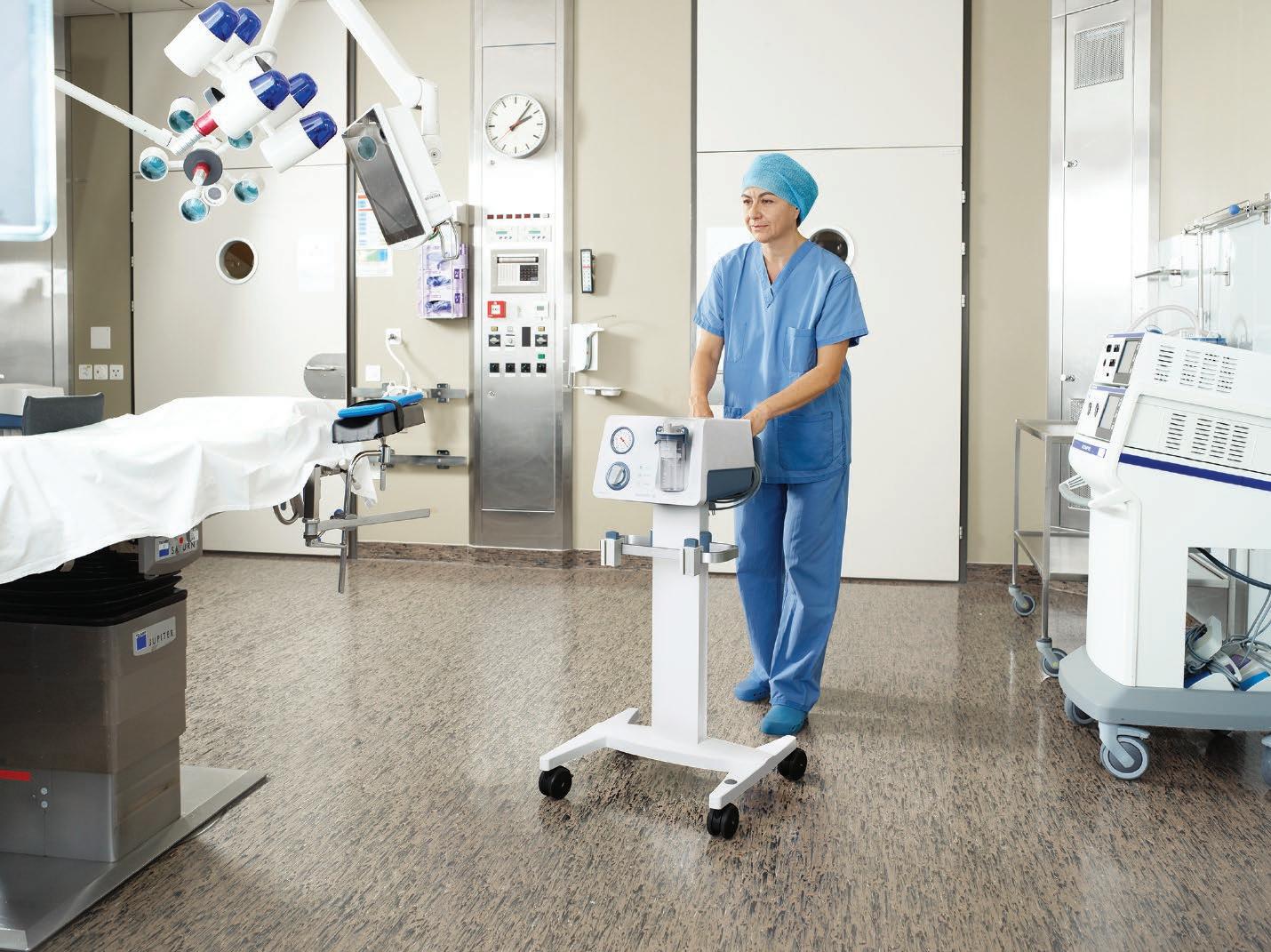
5 minute read
The Future of Noise Reduction Strategies
James Butler, Staff Writer
Noise in the operating room frequently exceeds safe levels. The question now is: what can hospitals do about it?
WHEN CHOOSING equipment for the operating theatre, managers might focus on price, economy, performance or efficiency. However, going forward they will have to pay more attention to how much sound it makes. Noise pollution is a serious, yet until now unrecognised, hazard in the operating room (OR).
Growing Awareness Awareness is finally beginning to build. Research was sporadic until a few years ago, but the last few years have witnessed a flurry of studies and literature reviews into the effectiveness of noise reduction strategies.
A 2014 study from Engelman et al assessed the impact of a noise reduction program in the operating theatre. Over the course of 156 operations, sound levels were measured after a noise reduction program. This program focused on education, rules and specific technical devices.
The biometric data of surgeons was taken before and after the noise reduction program while a questionnaire measured their behaviour. Median noise levels in the intervention group were down by −3 ± 3 dB(A) (63 vs 59 dB(A), P < 0.001) with a grossly decreased number of peaks greater than 70 decibels. The study found that the spontaneous rise in noise during an operation equated to a lawnmower or a passing truck. However, specific measures could reduce the sound levels by 50%. This reduction led to fewer post-operative complications and responders exhibited marked improvements in their behavioural and biometric indicators 17 . Surgeons with an above average sensitivity to noise experienced improved team communications, a decrease in sudden noise peaks and disturbed conversations. The intervention also reduced both the surgeons’ pre and post-operative rise in cortisol by approximately 20%. The surgeons’ electrodermal potentials of greater than 15 μS, indicating severe stress, fell by 60% (P > 0.05).
Solving the Problem Studies such as this have demonstrated the psychological and physical impacts of OR noise pollution. Acknowledging the problem, though, is one thing. Doing something about it is something else. Noise is an inevitable result of OR life whether through staff communication or equipment noise.
Strategies must be multi-layered, providing protection in some instances and mitigating noise production in others.
A report from the American College of Surgeons made the following recommendations to reduce noise levels and interruptions 18 . • Create a no interruption zone, or sterile cockpit during critical phases of a procedure. This would prohibit telephone calls or non-essential conversations. • Noise levels should be measured within the OR to provide evidence for the effectiveness of noise reduction strategies. Empirical data could be used to assess the success of interventions and provide real time information to the OR team about when noise levels exceed recommended maximums. • Educate staff on the sources of noise and their impact on staff safety, as well as what can be done to mitigate the problem. • Evaluate the physical environment and identify ways to reduce noise such as minimising the dropping of instruments into trays. • Add simulation training to enhance focused attention skills in the presence of noise and distractions. • Simulation training to improve noise reduction strategies. • Consider alternative equipment that produces less noise.
B Quieter Equipment Any noise reduction strategy will require a blend of all these measures. However, it is the last point where the largest gains can be made. Staff can modulate their behaviour and practices, managers can eliminate external
© MEDELA
distractions, but equipment and machines will still produce sound.
Gradually, manufacturers are waking up to this new demand. As health services become more sensitive to the importance of noise pollution within the operating theatre, they are creating fresh demand for equipment which offers a solution.
Some of the latest devices are now beginning to draw on noise reduction features. Medela’s latest range of dominant Flex and Basic Suction Pumps, for example, are marketed as being ‘whisper quiet’. Conventional wall mounted models can produce noise levels of more than 100 decibels. This product, though, brings that down to less than 40 decibels. Combined with a more flexible and portable design, the device is configured around usability and comfort 19 . Other approaches provide staff with more protection from noise. The challenge is to block unnecessary noise, while ensuring medical staff can communicate. One solution is the Silent Operating Theatre Optimisation System which uses multiple wireless headsets with incorporated wireless speakers to control the communication matrix. Trials have suggested positive feedback from surgical staff using the devices 20 . Other studies have looked at the composition of walls. Sound absorbing materials have been
used to create a more harmonious atmosphere within the room. For example, in one case study a unique flash spun plexifilamentary film-fibril sheet was used to absorb noise. However, using sound proofing material runs into problems with infection control.
The impact of noise pollution, then, can be controlled within the OR setting in a number of ways. Staff can be educated, procedures changed and protective equipment can be used. Without addressing the most serious cause of sudden peaks in noise, though, progress will be limited. Machines can produce sudden bursts of noise which far exceed recommended safe guidelines. Such noise is stressful, upsetting and distracting, but this needn’t be the case. As new products demonstrate, devices can be made to run more quietly without impacting performance or dramatically affecting the price.
Technology develops quickly. As attitudes change, demand shifts. In the future noise pollution may well become one of the first things managers consider when buying machines for the OR. One thing’s for sure. There is a concerted push to reduce noise polluting in theatres. By doing so successfully, hospitals can save money, avoid mistakes and improve the mental health of some of the most important professionals within the healthcare system.






